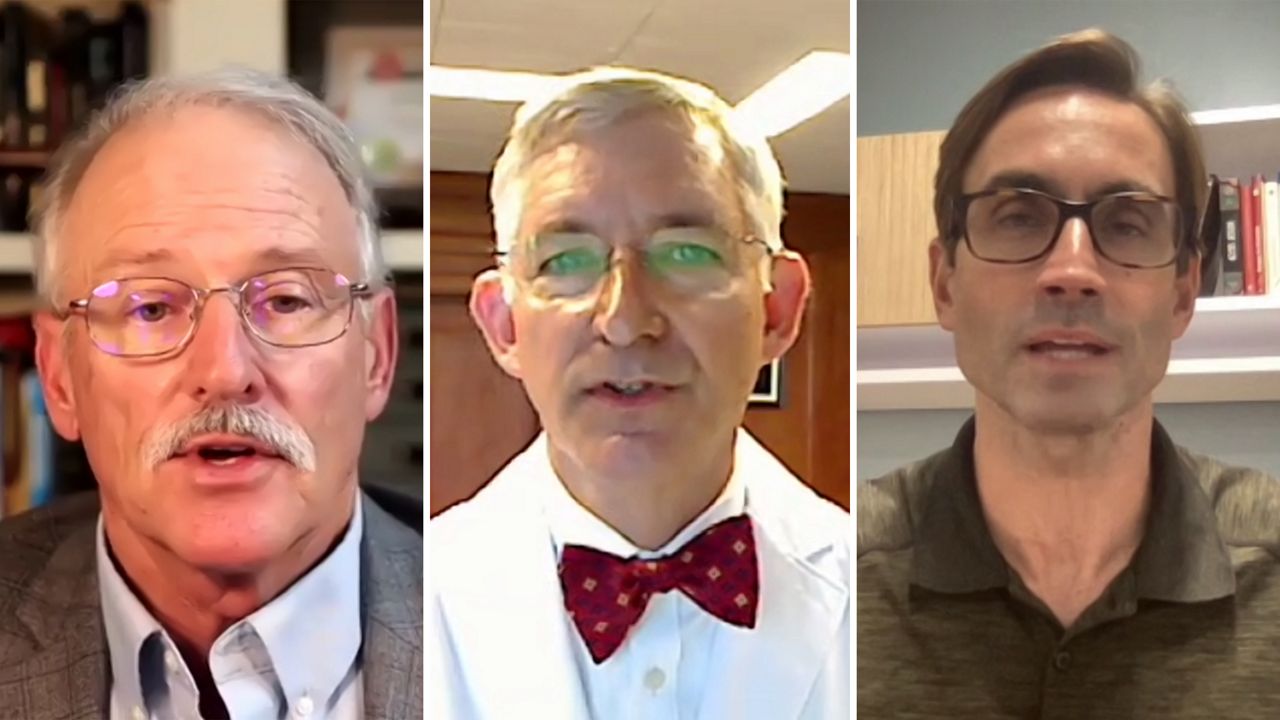COLUMBUS, Ohio — Ohio hospitals are facing “dangerous strain” from high COVID-19 volumes that continue to rise, Ohio Health Director Dr. Bruce Vanderhoff said Thursday.
What You Need To Know
- COVID-19 cases and hospitalizations rise to concerning levels
- Ohio hospitals postpone elective surgeries, limiting visitation
- Some facilities are full due to strain from COVID-19 patients
“Hospitals are having to make difficult decisions and implement plans that alleviate that pressure on their systems and their staff,” Vanderhoff said. “Some have had to reschedule elective procedures. Some have diverted patients to other hospitals, or they've implemented patient visitation policies and, as we've heard, some have temporarily even reached their full capacity.”
Vanderhoff said these events should be alarming to Ohioans, especially unvaccinated residents, who are at high risk as the state reports 7,203 seven-day average cases.
Ohio’s cases have increased by 42% in the last two weeks, while COVID-19 hospitalizations have risen to 3,580, a 39% increase in the last two weeks.
“The figures we're seeing for COVID-19 cases, hospitalizations and ICU admissions are all reminiscent of what we saw during our winter surge,” Vanderhoff said.
Due to the current strain on hospitals, residents with non-emergencies are encouraged to consider if their health care needs can be met by an urgent care, a pharmacy clinic or a telehealth provider, or to be prepared for longer waits at the state’s hospitals, Vanderhoff said.
The Ohio Department of Health’s news conference Thursday featured hospital officials from opposite ends of the state — Dr. Brian Kaminski, vice president of quality and patient safety with ProMedica in Toledo, and Dr. Michael Canady, CEO of Holzer Health System in southeastern Ohio.
Both health systems are being challenged with high patient numbers and fatigued staff, forcing hospitals to turn to emergency protocols.
At Holzer, the hospital is so busy that 13 patients were boarded in the emergency room Thursday waiting for an inpatient bed or a transfer to another hospital, Canady said.
The current census of 73 COVID-19 patients is 75% higher than the peak last winter, officials said.
Hospital staff who don’t normally work at the bedside are now taking front-line shifts. Holzer hasn’t stopped all elective surgeries, but some procedures that are likely to require overnight hospital stays are being delayed, officials said.
“We are quite frankly at a breaking point, and I don't know how much more we can handle without, unfortunately, patients not being able to get the care that they deserve,” Canady said. "I don't know that the public really knows how much we are really struggling with this.”
All eight hospitals in Lucas County, including three ProMedica hospitals, went on EMS bypass Monday, meaning that they couldn’t accept most EMS transports, Kaminski said.
The two largest hospitals in the county went on the bypass status early in the day, causing a domino effect with the other hospitals into the evening, he said.
Officials enacted a “red alert” procedure which meant that the hospitals alternated taking overflow patients.
“That provided enough of a breather and enough of a reset for hospitals to start to come back online,” he said.
After about 12 hours, half of the hospitals were off bypass and all of the hospitals were online by the end of Tuesday.
The high patient numbers could have largely been avoided with more vaccinations, which adds to the frustration among front-line staff, Kaminski said. It's important to recognize the health care workers who are giving it their all, he said.
“We see some very meaningful heroics and great caregiving, and all at the same time those same caregivers are feeling the stresses and the weight of the system literally being stressed to its max at this point,” Kaminski said.
During the press conference, Vanderhoff also provided an update on the state’s preparations to potentially administer third vaccine doses.
The state is getting ready for a booster rollout while awaiting guidance from the Food and Drug and Administration and the Centers for Disease Control and Prevention.
“We've been working on distribution plans with all of our vaccine partners that are cognizant of a range of potential authorize scenarios to ensure that if boosters are authorized, when they become available, we'll be well positioned to begin that distribution very rapidly,” he said.
It’s too early to finalize those plans at this point without knowing exactly what to expect from the federal government on the booster decision and timeline, he said.



